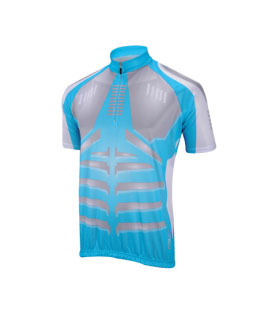
- Afrikaans
- Albanian
- Amharic
- Arabic
- Armenian
- Azerbaijani
- Basque
- Belarusian
- Bengali
- Bosnian
- Bulgarian
- Catalan
- Cebuano
- Corsican
- Croatian
- Czech
- Danish
- Dutch
- English
- Esperanto
- Estonian
- Finnish
- French
- Frisian
- Galician
- Georgian
- German
- Greek
- Gujarati
- Haitian Creole
- hausa
- hawaiian
- Hebrew
- Hindi
- Miao
- Hungarian
- Icelandic
- igbo
- Indonesian
- irish
- Italian
- Japanese
- Javanese
- Kannada
- kazakh
- Khmer
- Rwandese
- Korean
- Kurdish
- Kyrgyz
- Lao
- Latin
- Latvian
- Lithuanian
- Luxembourgish
- Macedonian
- Malgashi
- Malay
- Malayalam
- Maltese
- Maori
- Marathi
- Mongolian
- Myanmar
- Nepali
- Norwegian
- Norwegian
- Occitan
- Pashto
- Persian
- Polish
- Portuguese
- Punjabi
- Romanian
- Russian
- Samoan
- Scottish Gaelic
- Serbian
- Sesotho
- Shona
- Sindhi
- Sinhala
- Slovak
- Slovenian
- Somali
- Spanish
- Sundanese
- Swahili
- Swedish
- Tagalog
- Tajik
- Tamil
- Tatar
- Telugu
- Thai
- Turkish
- Turkmen
- Ukrainian
- Urdu
- Uighur
- Uzbek
- Vietnamese
- Welsh
- Bantu
- Yiddish
- Yoruba
- Zulu
Dec . 20, 2024 19:11 Back to list
how to adjust a mountain bike front derailleur
How to Adjust a Mountain Bike Front Derailleur
Adjusting the front derailleur of your mountain bike is a crucial skill for any cyclist who wants to ensure smooth shifting and optimal performance. A properly adjusted front derailleur can enhance your riding experience by providing quick and seamless shifts between gears, while also protecting your drivetrain from unnecessary wear and tear. Here’s a step-by-step guide on how to adjust a mountain bike front derailleur effectively.
Tools Needed
Before you begin adjusting the front derailleur, gather the necessary tools. You will need - A Phillips or flat-head screwdriver (depending on your derailleur type) - A 5mm Allen key - A clean rag for wiping down parts
Step 1 Inspect the Front Derailleur
Before making any adjustments, it’s essential to inspect the front derailleur for any visible damage or misalignment. Check that the derailleur is securely mounted to the bike frame. The derailleur cage should be parallel to the chainrings, and it should be positioned about 1-3mm above the tallest chainring. If it’s not aligned correctly, use the 5mm Allen key to adjust the mounting bolt.
Step 2 Adjust the Limits
The front derailleur has two limit screws often labeled “High” and “Low.” These screws control how far the derailleur can move in either direction.
- High Limit Screw This limits how far the derailleur moves to the outer chainring. Shift to the smallest chainring (the one closest to the bike frame) and check if the derailleur cage is just above the chain. If it’s too far over the chain, adjust the high limit screw (usually marked with an “H”) by turning it clockwise to move the derailleur inwards.
- Low Limit Screw Shift into the largest chainring. The cage should sit just above the chain without touching it. If it’s too far out or too close, adjust the low limit screw (marked with an “L”) in a similar manner.
how to adjust a mountain bike front derailleur

Step 3 Cable Tension
Once the limit screws are set, it’s essential to ensure the cable tension is correct. If the shifting feels sluggish or if the derailleur doesn’t move when you shift, you may need to increase the cable tension.
Locate the adjuster barrel on the derailleur itself or at the shifter. Turning it clockwise will increase tension, while turning it counterclockwise will decrease it. Make small adjustments and test the shifting after each change.
Step 4 Fine-Tuning the Position
With the limits set and cable tension adjusted, it’s time to fine-tune the derailleur’s position. Shift through the gears multiple times. If the chain doesn’t cleanly shift onto the larger or smaller chainring, you may need to make small adjustments to the position of the derailleur by tweaking the cable tension again.
If the derailleur is correctly adjusted, shifts should be smooth and responsive. You can also check for chain drop issues; if the chain falls off, you may need to readjust the limit screws.
Step 5 Test Ride
After making all adjustments, take your bike for a test ride. Pay attention to how the derailleur performs under load. Engage different gears and note if the chain shifts smoothly. If problems persist, re-check your adjustments or consult a professional bike mechanic for further assistance.
Conclusion
Adjusting a mountain bike front derailleur can seem daunting, but with patience and the right tools, it’s a manageable task. Regular maintenance and adjustments will not only enhance the performance of your bike but also prolong the life of your components. Enjoy smoother rides with your perfectly tuned front derailleur!
-
The Ultimate Kids' Four-Wheeler Experience
NewsJul.09,2025
-
The Ultimate Guide to Mountain Bikes: Gear Up for Your Ride
NewsJul.09,2025
-
The New Age of Cycling: Electric Bikes for Every Rider
NewsJul.09,2025
-
The Best Kids Bicycles: Ride in Style and Safety
NewsJul.09,2025
-
The Best 3-Wheel Scooters for Kids: Fun, Safety, and Adventure
NewsJul.09,2025
-
Revolutionize Your Ride: Affordable Electric Bikes
NewsJul.09,2025
-
Finding the Perfect Mountain Bike for Every Rider
NewsJul.09,2025



